#Skipper caterpillar
Photo







African giant skipper, Pyrrhochalcia iphis, Hesperiidae
Found in Western Africa
Photo 1 by desertnaturalist, 2-3 by rdb123, 4 by emskakoon, 5 by kdbishop69, 6 by muir, and 7 by botalu
#animals#curators on tumblr#insects#bugs#butterfly#skipper#african giant skipper#larva#caterpillar#one nice bug
1K notes
·
View notes
Text

♕ 왕팔랑나비 (Lobocla bifasciata) : Skippers Family (Hesperiidae)



This cute caterpillar is crop and fasten leaves with their threads to make their soild and cozy home.
Their host plants are bean family, like Kudzu, Locust trees... (that's why their heads are look like a red bean)
They overwintering as larvae and pupae until next shiny summer is coming, and then...









They become fluffy noble skippers! ❤️
Caterpillar observation by onidiras on iNaturalist (CC BY-NC)
#photographers on tumblr#my photography#original photographers#art#lensblr#photography#insect photography#wildlife photography#macro photography#nature photography#nature#naturecore#insect#butterfly#skipper#hesperiidae#caterpillar#caterpillars#bugblr#bug#bugs#biology#entomology#fluffy angel#knowledge#read bean part was a joke lol#my beloved butterfly#not my photos tag#no to generative ai
20 notes
·
View notes
Text

Silver-Spotted Skipper Caterpillar
Jason Ondreicka / Getty Images
#jason ondreicka#photographer#getty images#moth#silver-spotted skipper caterpillar#caterpillar#insect#nature
19 notes
·
View notes
Text
Lepidoptera time!
starting with skippers



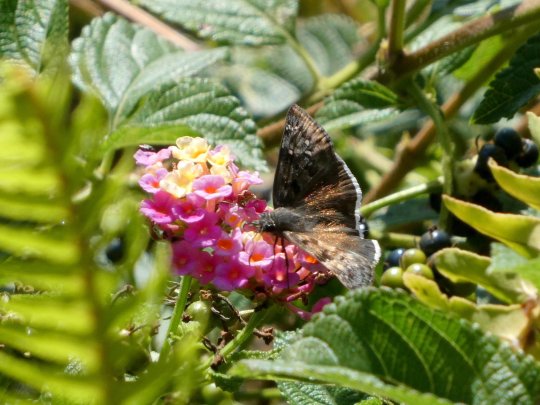

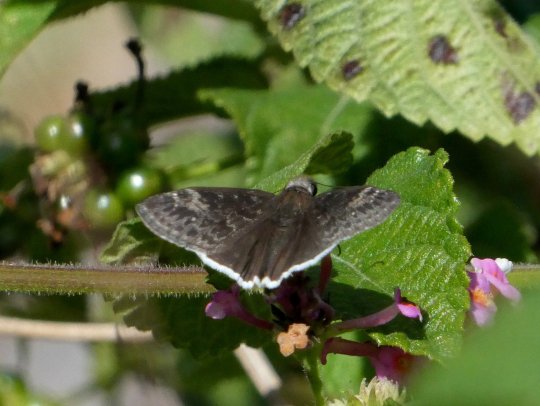
Burnsius albescens, Hylephila phyleus, Lon melane, Erynnis tristis, Panoquina errans, Erynnis funeralis
couple of little guys
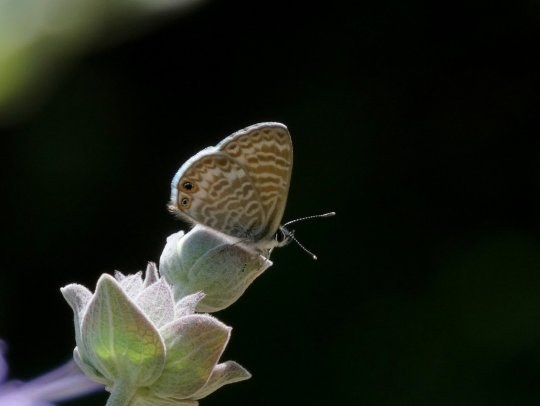

Leptotes marina, Strymon melinus
bigger guys
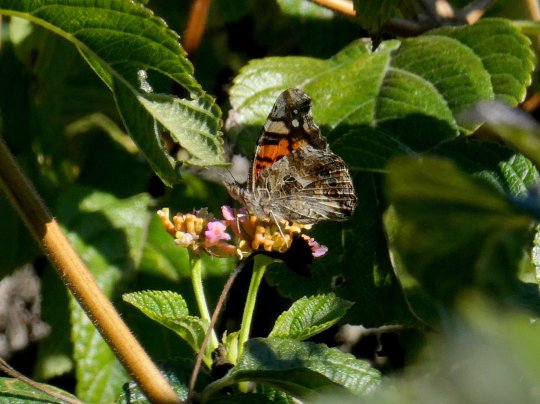
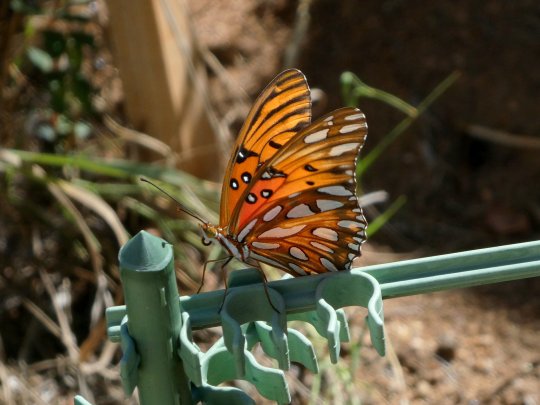




Vanessa annabella, Dione vanillae, Papilio rumiko, Nymphalis antiopa, Danaus plexippus, Phoebis sennae
moth time! starting with big and medium size


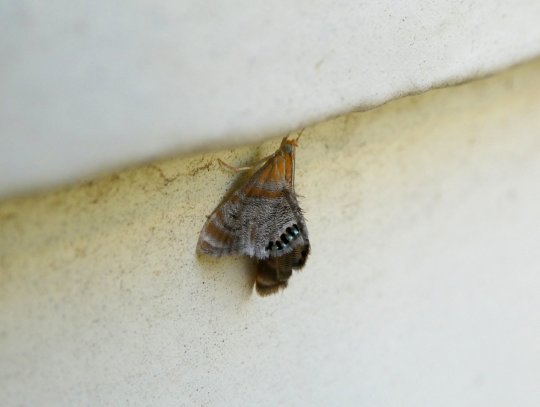
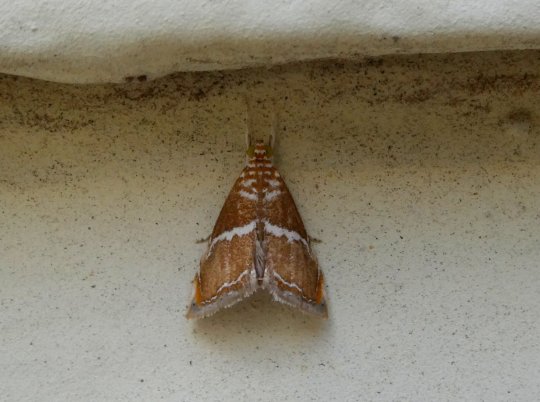

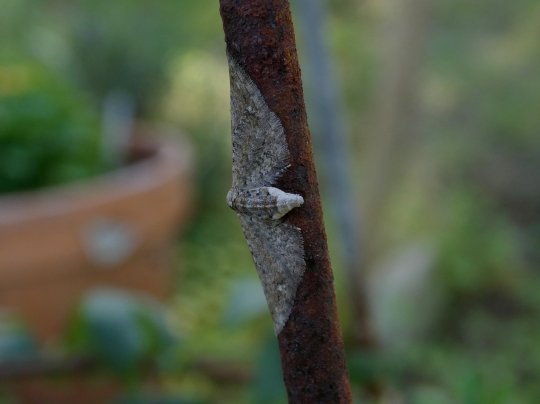
Arachnis picta, Chloridea virescens, Dicymolomia metalliferalis, Abegesta remellalis, Spoladea recurvalis, pug moth of some kind
little guys






Plutella xylostella, Lineodes integra, knot-horn moth of some kind, Crambus sperryellus, plume moth, crambid snout moth of some kind
caterpillars!




Estigmene acrea, Dione vanillae, tiger moths of some kind, Oedemasia sp.
#photography#insects#bugs#moths#butterflies#lepidoptera#caterpillars#animals#invertefest#monarch#swallowtail#tiger moth#skipper#gulf fritillary
5 notes
·
View notes
Text
harvesting leaf litter for the isopods today and because I handpick it I can make sure I don’t hurt any bycatch. I found three little caterpillars and made sure to put them aside and replace them after picking up the leaves.

there’s a cutworm moth (noctuid), a skipper butterfly(hesperiid), and a litter moth (erebid). I also saw dozens of ghost spiders, a couple weevils, and lots of rove beetles.
leaf litter is a necessary home (and food! the litter moth eats detritus) to so many animals over the winter. if you live in a place with deciduous trees leave the litter be, or at least move it somewhere that the critters can rest until spring.
496 notes
·
View notes
Text
Research has shown repeatedly that when native host plants dwindle or disappear from an area, the populations of insect herbivores shrink and become less diverse. An analysis of 76 studies of caterpillar health on native and introduced plants found that with few exceptions caterpillars were larger and more likely to survive when reared on their native host plants. And in plant communities invaded by non-native species, the study found, the abundance and diversity of butterflies and moths were significantly reduced.
There have, however, been exceptions. In a small percentage of cases, insect herbivores have adopted introduced plants as food sources, especially if they belong to the same genus or family as their native hosts. In the most celebrated example, 34 percent of California butterfly species were found to feed or lay their eggs on non-native plants.
Because not every study has demonstrated negative effects, the long-running controversy over whether introduced plants are harmful to native insects continues. Ecologist Richard Hobbs, a senior research fellow at the University of Western Australia’s School of Biological Sciences, says that “the assumption that species cannot adapt to new resources is being increasingly questioned.” He notes that “studies indicate that non-native species can have positive, neutral, or negative impacts, and it is not as simple as just assuming that non-native species are just plain bad.”
According to Tallamy, however, the positive cases are uncommon, and “you have to look at the negative as well as the positive effects.” He points to kudzu, a rampant invader of the eastern U.S. that has been found to support the silver-spotted skipper, a native butterfly. This has led some people to conclude that invasive non-native plants are not all bad. “With a kudzu invasion you may gain the silver-spotted skipper,” Tallamy responds, “but you lose literally thousands of species” that depend on the native plants the kudzu replaced.
438 notes
·
View notes
Text

Silver-spotted Skipper
The metamorphosis from caterpillar to butterfly involves major changes such as going from chewing mouth parts for eating vegetation to a proboscis for sipping nectar and the change in type of locomotion from legs for crawling to the addition of wings for flight. The real surprise is that this transformation often occurs in about two weeks.
31 notes
·
View notes
Text
Lunarpunk gardens
Okay, I'll admit I'm not on top of the whole aesthetics of the various -punk genres, but looks imo should be considered after function and ethics. SO...
I was inspired by this post and got to thinking about what a Lunarpunk garden would mean on my site.
I decided the most important part of the post was "Let me propose lunarpunk being more than just witchy aesthetics. It should be about reducing light pollution, protecting all endangered species including the ugly ones, and most of all seeing darkness as a coexisting counterpart and not something to conquer." So, that's three ideas that I can work with.
reducing light pollution: Working through this idea the same way I would evaluating an established garden in terms of layers and scale of objects in the space, at a site-level the only exterior lights are those at the front and back door. Various flying insects are very attracted to the back light, which is a normal incandescent bulb, and less are attracted to the front ones, which are green. In both cases, we never leave them on all night, but working off what several websites say about bulb color and warmth, I can swap all the bulbs for a warmer-tone LED bulbs and that would cause less issue when they are on at night. Scaling up, I'm not sure what I can do about the huge streetlight on our road, which has the most hideous white-light. Before I DO anything, I probably should dig into the city's files, since I know the bulbs were changed into those LEDs a few years ago, and maybe there was some thought put into that decision.
protecting all endangered species including the ugly ones: Given I'm looking at Lunarpunk, an obvious connection here was moths, the 'ugly' relatives of butterflies. Personally, I love moths and understand their greater ecological role compared to butterflies from a video presentation I watched a few months ago (I'll post that later). Focusing in on the "endangered" aspect, I used Xerces Society's 'Species Profile' tool to look at my state and see what moths are endangered in my area. (Side-note: I also looked at the other categories, like Bees, Beetles, etc. and nothing was specifically noted for my area, so I'm putting those categories on the backburner for ideas rn.) I identified three species of moth as endangered for my area: Diana Fritillary, Dukes' Skipper, and Early Hairstreak. The idea to then ID what plants the eggs and larvae need as host plants, what adults need for sustenance, and what mirco-climates I can make to support their life cycles.
Diana Fritillary (Speyeria diana) "As a forest-dependent species, threats to the Diana fritillary come mainly from forest management: logging operations and pest control... There is one flight from June to September. Males emerge before females and patrol within the forest. Females lay eggs later in the flight period, mainly August, walking along the ground and attaching eggs singly to twigs and dead leaves. As with other Speyeria species, the caterpillars hatch and hibernate without feeding. They emerge in spring to feed on the leaves and flowers of various species of violets. Adults feed on nectar from a variety of plants, including milkweeds (Asclepias sp.), ironweed (Vernonia sp.), and red clover (Trifolium pratense). Males will also drink fluids from dung...Habitats for the Diana fritillary are the edges and openings in moist, rich mountain forests. They will also use pastures, shrublands, and fields for nectaring but will only breed if there is a suitable forest margin. Larval hostplants are various species of violets (Viola sp.)" (quotes from Xerces Society).
So, this species wants a forest edge, which my neighborhood is certainly not; however, I have a decent handful of trees which I mulch using unprocessed leaf litter and stems over the winter, and this provides a decent base for supporting any number of species in my site. I also have lots of self-sown viola in the lawn and beds, which I greatly enjoy not only for their tiny and delicate looking flowers, but also the fulsome heart-shaped leaves the rest of the summer and autumn. I have two Swamp Milkweeds planted, and I'll consider more species as space and needs arise. So far, off to a good start.
Dukes' Skipper (Euphyes dukesi) "It can be found in a variety of moist habitats with long grass, such as marshes or ditches, but the primary habitat is patches of sedge—its main larval host plant—in forested swamps. Dukes’ skipper deserves conservation efforts wherever it is found. Its forested wetland habitat should be protected from drainage, logging, and spraying...In the mid-south, there are two between June and September... Adults visit open wetlands to drink nectar from flowers such as pickerelweed (Pontederia sp.), sneezeweed (Helenium sp.), hibiscus (Hibiscus sp.), and blue mistflower (Conoclinium sp.)...Dukes’ skipper can be found in a variety of moist habitats with long grass, such as marshes or ditches, but the primary habitat is sedge patches in forested swamps. Larval hostplants are sedges, including hairy sedge (Carex lacustris) and shoreline sedge (Carex hyalinolepis)" (Xerces Society).
Again, not a habitat that is immediate to my site. The good news is that I'm already starting several Swamp Hibiscus from seed this year for various spots, and I've been looking more into sedges for a couple wet spots. In particular, I want to run an open pipe from the AC drip into a spot where I removed a non-native 'hibiscus' this winter after some damage. I could feasibly do a few sedges around the Swamp Hibiscus. I doubt I would get a breeding population on my own, but if it becomes an effective use of the water, this might be a technique that I can demonstrate to others in the neighborhood - and again, it's a good habit for several species besides the Skipper.
Early Hairstreak (Erora laeta) "The habitat is mature deciduous and mixed woods containing its host plants, American beech and beaked hazelnut. As a forest-dependent species, both logging activities and pest control spraying are possible threats...There are usually one flight (May – mid-June) in the north and two flights (mid-April – mid-May and late- June – July) in the east. Rarely, a partial third flight (late-August – early-September) in the southern Appalachians. Males perch in treetops on ridges and hilltops to watch for females. Adults nectar on fleabane (Erigeron sp.), oxeye daisy (Leucanthemum vulgare), and steeplebush (Spiraea tomentosa) Early Hairstreaks spend a considerable part of their life in the canopy. Some observers note that adults visit moist ground in the morning (for example, along dirt roads) before returning to the canopy in the afternoon. Eggs are laid singly on the hostplant fruit. Caterpillars feed on nuts, initially the husk in early instars and later boring inside. Most of the year is spent as pupae, probably in the leaf litter" (Xerces Society).
I'm realizing now that the reason these three species are threatened so much is that their habitat is decidedly not urban or adaptable to the swathes of monocultures that have swallowed my area. I don't have any Beech or Hazel nut yet, but I do have some beechnuts sown in a pot, that I picked off the path in a local park. If those germinate, I can probably keep some in pots and maybe get one in the ground depending on the circumstances this summer. I don't have any of the nectar plants, except the fleabane which randomly pops as a volunteer ( a "weed" to those more judgmental about pioneer-recovery species), and I can look into Steeplebush seeds, since they do look gorgeous and I can probably sell the more reluctant in my household on that factor.
seeing darkness as a coexisting counterpart and not something to conquer
This one is a bit tougher to work with outside of my own praxis, specifically in convincing others visually through my site. Honestly, I think the best way to suggest this visually is in using plants that are either dark foliaged (I have a ninebark and planning on some corn that fit this bill) or silver foliaged/white flowering ( a garden sage I have in a pot and the sown buttonbush, maybe). In daytime, I'm hoping to focus a lot on bright masses of color paired with bright hardscape, like the existing white accents and planned turquoise painted pots. The dark foliage are native plants; the ninebark is a replacement for the awful barberries I spent hours hacking out, and the corn is "Flor de Rio" a burgundy-colored popcorn variety. Those alone I hope are visually different enough to catch people's interest, but I know a lot of people take walks in my neighborhood in the evening, at dusk or after dark. The white flowers and silver foliage might actually benefit from the harsh streetlight, here, shining out from the muted greens and darker foliage.
The easiest way to try and further this point is naturally to talk to people about the idea, but I think this visual communication/demonstration could serve as the backbone of those potential conversations.
further thoughts
Lunarpunk isn't a genre I've really worked with before, but I hope this interpretation of the idea (a dark/hidden counterpart to the more well known Solarpunk ethos) can meaningfully help people reconsider their biases about visibility and usefulness, and of course provide support to various critters in the area.
30 notes
·
View notes
Text
October 16th, 2023


Least Skipper (Ancyloxypha numitor)
Class: Insecta
Distribution: Eastern United States and south-eastern Canada.
Habitat: Wet, open areas with tall grass; marshes, ditches, streams, ponds, hillsides and old fields.
Diet: Caterpillars feed on various grasses such as marsh millet, rice cutgrass, and cultivated rice; adults nectar from small, low-growing flowers like wood sorrel, swamp verbena, pickerelweed, milkweed, chickory and white clover.
Description: The least skipper is a tiny butterfly that can be found fluttering through tall grasses during the warmer months. It has a notably weak, choppy flight, and is rarely found flying more than a few feet off the ground.
Least skipper caterpillars create a hiding spot for themselves by cutting and folding a small flap from a leaf under which to hide as they graze. As they grow, they enlarge the flap little by little, until eventually stitching together leaves in order to create a tube-shaped retreat.
(Photos by Wisconsin Butterflies and Tom Murray)
40 notes
·
View notes
Text
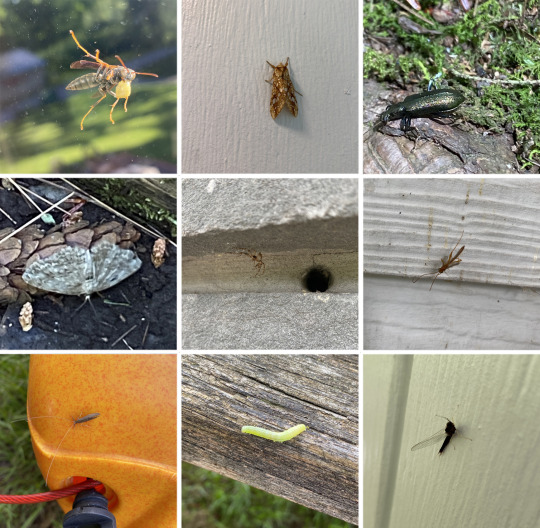
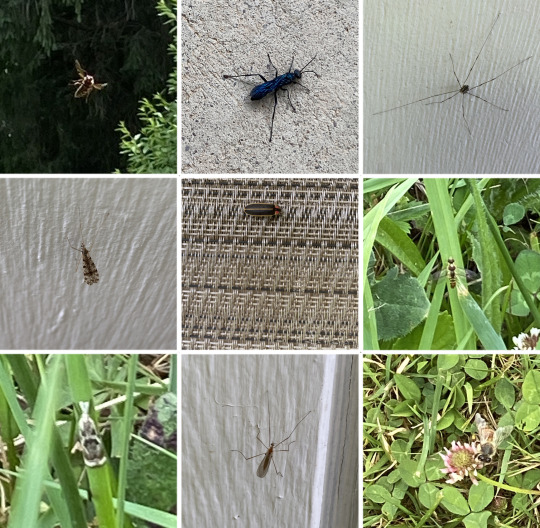
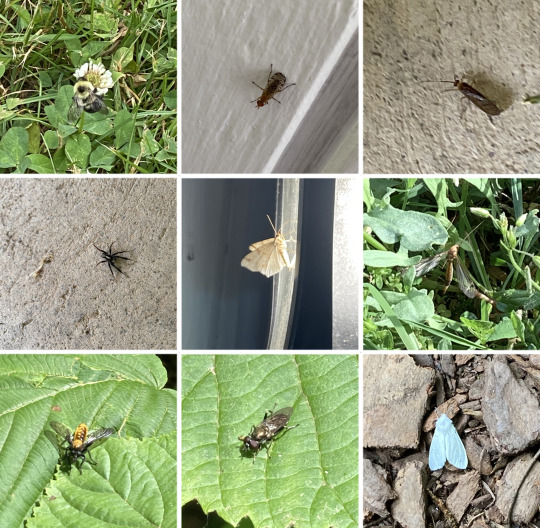
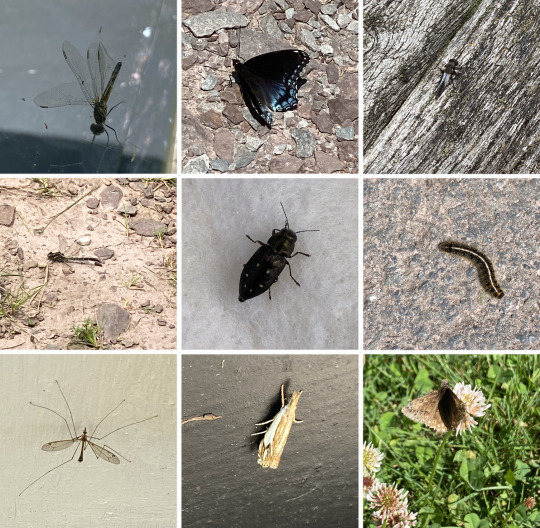
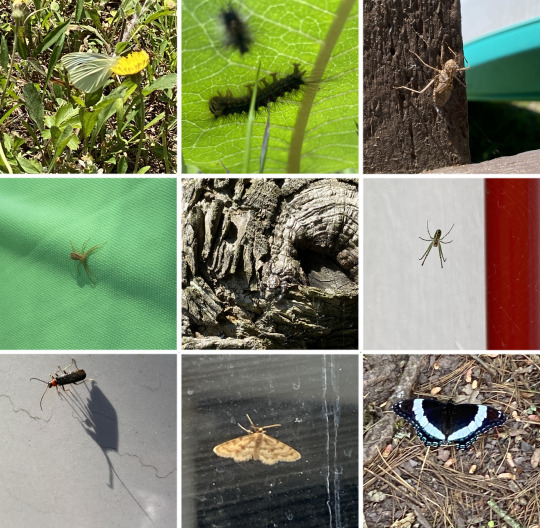
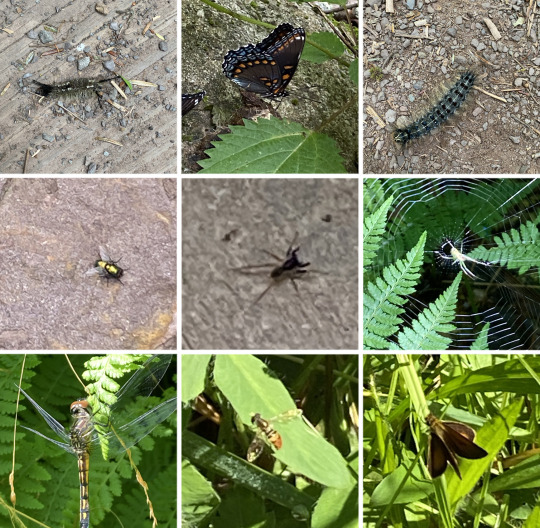
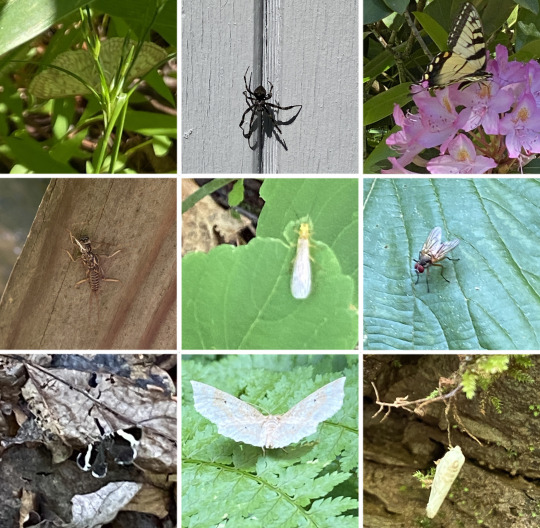
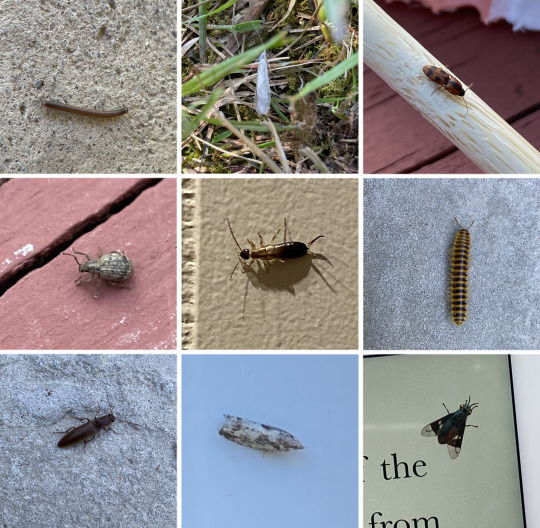
Zuzu's bug-ventures June 8-16, 2024 (insects/spiders from a state park in northeast Pennsylvania) (re-uploading because of file size issues)
I figured I would make a collage after getting so many! A couple of the above photos have duplicates, so all in all I believe I found 65 distinct kinds. I'm still working to ID some of them, but all the ones I think I have ID'd are under the cut. Anyway, it was truly a fun experience. Maybe next time I'll have a camera that isn't a shitty phone!
You can see full size photos of most of these here.
IDs under the cut
Just a note, I'm not 100% on any of these. My IDs are speculative based on google searches, reddit, and so-on. If you think something is wrong, PLEASE let me know!
Also, each image has 9 insects/spiders in a grid. I will be referring to each grid of 9 insects/spiders as a single image below, and identifying all 9 based on rows within the image. If that makes sense. Hopefully it does!
Image 1 (first row left):
Top row (from left to right): Northern paper wasp (I'm told it's carrying caterpillar meat); Hickory tussock moth; Ground beetle of some kind (could not ID)
Middle row: Fall cankerworm moth; Barn spider; Red ichneumon wasp
Bottom row: Long-horned caddisfly; Copper underwing caterpillar; Brush-legged mayfly
Image 2 (first row right):
Top row: Very loud very big bee (could not ID); Common blue mud dauber wasp; Harvestman spider
Middle row: Limoniid crane fly; Firefly; Hoverfly
Bottom row: Elegant grass-veneer moth; Tiger crane fly; Western honey bee
Image 3 (second row left):
Top row: Two-spotted bumble bee; Marsh fly; Yellow-collared scape moth? (could not ID)
Middle row: Wolf spider (male); Macaria moth; Tipula lunata (type of crane fly)
Bottom row: Robber fly; Brown-toed forest fly; Virginian tiger moth
Image 4 (second row right):
Top row: Blue dasher dragonfly? (could not ID. Dead in spider web); White admiral butterfly; Chalk-fronted corporal dragonfly
Middle row: Clubtail dragonfly? (could not ID); Hemlock borer beetle; Eastern tent caterpillar
Bottom row: Another Tipula lanata crane fly; Double-banded grass-veneer moth; Horace's duskywing butterfly
Image 5 (third row left):
Top row: Cabbage white butterfly; Spongy moth caterpillar; Dragonfly exoskeleton (could not ID)
Middle row: White-striped running crab spider; Jumping spider (could not ID, but yes there is a spider in this photo!); Orchard orbweaver spider
Bottom row: Soldier beetle; Fortunate wave moth; Another white admiral butterfly
Image 6 (third row right):
Top row: Tussock moth caterpillar; A third white admiral butterfly (this is the last one I promise! They just have so much variation!); Another spongy moth caterpillar
Middle row: Common green bottle fly; Eastern parson spider; Another orchard webweaver spider
Bottom row: Blue dasher dragonfly (possibly female); Calligrapher fly; Dun skipper butterfly
Image 7 (last row left):
Top row: Another fortunate wave moth? (could not ID); Orbweaver spider of some kind (Could not ID); Eastern tiger swallowtail butterfly
Middle row: Stonefly exoskeleton; Ontario sallfly; Lesser house fly
Bottom row: White-striped black moth; Pale metarranthis moth (this one is my favorite find); White planthopper? (could not ID)
Image 8 (last row right):
Top row: Millipede; Immaculate grass-veneer moth; Flat wireworm beetle
Middle row: Twobanded Japanese weevil (WEEVIL TIME!!); Earwig; Bob's yellow and black millipede
Bottom row: Click beetle; Sod webworm moth? (could not ID); Deer fly
And that's it! Again, let me know if I made mistakes or if you know any of the ones I couldn't ID.
#insects#insect photography#bugs#insect identification#tw insects#tw spiders#my photos#memories;#Zuzu's bug ventures
11 notes
·
View notes
Text





@greenix submitted: no IDs needed, just some charming little guys from work! our cecropia caterpillars are working hard at building their cocoons :)
I love them all! Big fan of skippers in general. I hope all the cecropias emerge successfully!
#animals#insects#bugs#submission#caterpillar#butterfly#skipper#video#saturniidae#cecropia moth#larva#chrysalis#cocoon
197 notes
·
View notes
Text
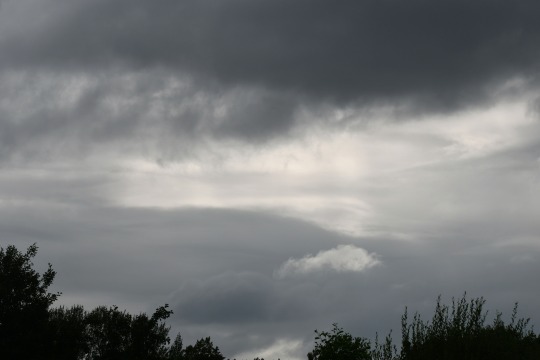
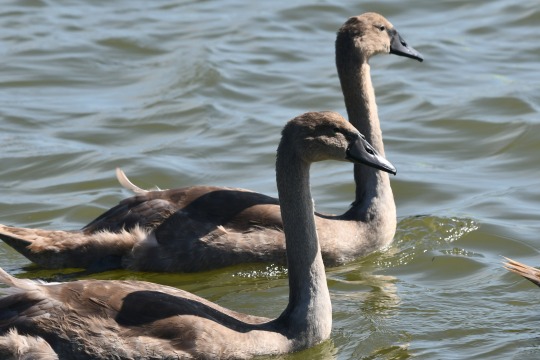
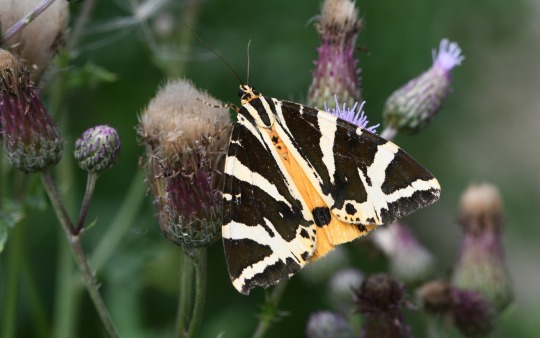

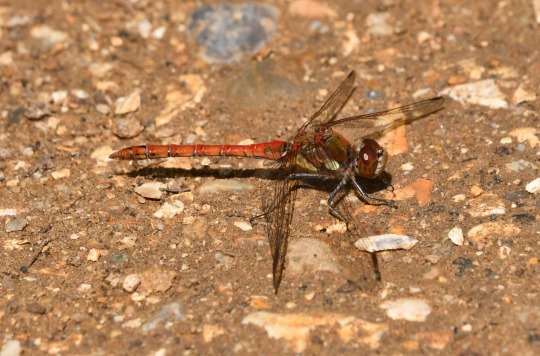

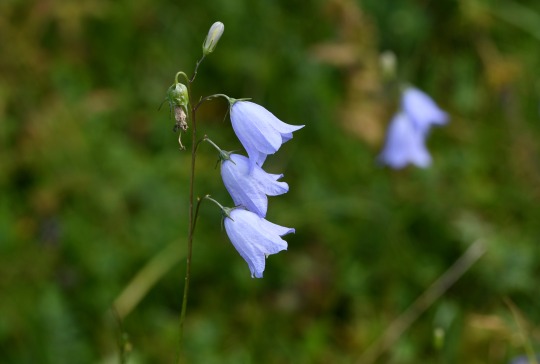

Eight of my favourite photos I took in August 2024 and month summary: Baby steps into the shift of the seasons
The photos are of; view with a moody sky at Lakeside Country Park, young Mute Swans at Keyhaven, Jersey Tiger moth at Lakeside, Chalkhill Blue at Stockbridge Down, Common Darter at Lakeside, Roe Deer at Acres Down, harebells at Shipton Bellinger and King Alfred's cake at Fishlake Meadows.
August is a time to enjoy high summer sights including butterfly filled meadows and darting dragonflies but also a time to prepare for change into an equally exciting wild season, as subtle signs like the drawing in of the nights and emergence of berries hint at the imminent baton exchange of summer and autumn. I have really enjoyed this August to the full for wildlife, walking and photos.
In the early days as the Big Butterfly Count drew to a close I ended triumphantly observing a big increase in species such as Meadow Brown, Common Blue and Speckled Wood being around. There were some stellar additions to my butterfly year this month with Essex Skipper, Silver-spotted Skipper, Chalkhill Blue and Brown Hairstreak seen. Other standout species of a fantastic butterfly month included Brown Argus, Wall Brown, Small Heath, Small White, Brimstone, Comma, Peacock and Red Admiral. I had a marvellous month of moths centring on a phenomenon over a week or so seeing a fair few Jersey Tiger moths at different locations a species I’d only ever seen three times prior to that, a really exciting influx of this resplendent moth. I was captivated by a splendid Swallow-tailed moth at home at the month’s start, with Double-striped Pug, Wavy-barred Sable, my first ever Purple Bar, Grass-veneer, Silver Y, Small Dusty Waves and Six-spot Burnet also enjoyed. As the month went on butterflies rather made way for dragonflies to take centre stage a little, with mesmerising times watching Migrant Hawker, Southern Hawker, evocative of late summer for me Common Darter and Black-tailed Skimmer, with Beautiful Demoiselle and Blue-tailed Damselfly good to see too.
Shift in the year was evident in my birdwatching month too which was another brilliant one with some migration movement. I loved seeing Whinchats at Hook-with-Warsash, Little Stint and Curlew Sandpiper at Pennington and Osprey at Fishlake Meadows. I got some splendid views of the Peregrines at Winchester Cathedral this month, very much enjoyed the new Great Crested Grebe chicks and young Moorhens on regular walks at Lakeside Country Park and was thrilled to see adorable Mute Swan cygnets well a few times at Winnall Moors and Keyhaven in a strong year I’ve had for seeing young birds. Other highlights this month included Ravens, Jay, Red Kite, Buzzard, Marsh Harrier, Kestrel, Sparrowhawk, the last Swifts, Swallow, House Martin, Sand Martin, Stock Doves, Stonechat, Bullfinches, Great Spotted Woodpecker at Lakeside and Green Woodpecker there and heard elsewhere, Chiffchaff, Long-tailed Tit, Blue Tit and Goldfinches including young at home, a few Kingfishers, Cormorants including notably at Lakeside and Winnall Moors, Grey Heron including notably at Lakeside and in Winchester, Little Egret, Great White Egret, Spoonbills, Knot, Grey Plover, Ringed Plover, Avocet, Common Sandpiper, Dunlin, Snipe, Whimbrel, Curlew, Eiders and some Tufted Ducks including ducklings.
Other nice sightings this month included of Roe and Fallow Deers on wonderful afternoon of deers at Acres Down in the New Forest, Grey Squirrel, Common Red Soldier beetle, my first ever Tawny Longhorn beetle at Shipton Bellinger, ladybirds, pondskater with especially lots at one point at Lakeside sticking in my mind, sawflies, charming Hornet mimic hoverfly at Stockbridge Down, Yellow-haired Sunfly, other hoverflies and bees, Ichneumon wasps, Fox and Cinnabar moth caterpillars, crickets/grasshoppers including Roesel’s bush cricket, Long-winged Conehead and Common Field Grasshopper, snails at home on wet nights and gorgeous Ambersnail at Winnall Moors, Common Lizards at Magdalen Hill and Grey Silverfish and spiders at home.
Onto plants and I saw some more thrilling wildflowers this month including fairy flax, water speedwell and another speedwell, St. John’s-worts, fleabane, ragwort, bird’s-foot trefoil, forget-me-not, scarlet pimpernel, water mint, sundew, bog asphodel, hemp agrimony, purple loosestrife, great willowherb, rosebay willowherb, small-flower hairy willowherb, marjoram, wild basil, tufted vetch, vetch, viper’s-bugloss, scabiouses including fine devil’s-bit scabious, wild carrot, upright hedge-parsley, sea aster, scentless mayweed, pineappleweed, dock, self-heal, sainfoin, creeping thistle, spear thistle, woolly thistle, horseweed, common mallow, musk mallow, marsh mallow, golden samphire, nightshade, broad-leaved enchanter’s nightshade and some of my favourites centaury, restharrow, common toadflax, eyebright and endearing nodding harebells. It was amazing to see sunflowers at home in the garden a stalwart of August with the fuchsias and black-eyed Susans coming on nicely too. The aforementioned berries I really enjoyed seeing this month included loads of blackberries and hawthorn, blackthorn sloes, rowan, guelder rose berries, nightshade berries, cuckoo-pint berries, elderberries, wild service tree berries and wayfaring tree berries with apple, acorn and chestnut seen too. There were some nice mushrooms seen this month as well including King Alfred’s cake and panthercap and I took in some stunning views at various locations and habitats with epic sky scenes including moody scenes, the moon and sunsets observed. Have a great September all.
#photography#walking#wildlife#birdwatching#moths#2024#outdoors#butterflies#chalkhill blue#brown hairstreak#fungi#wildflowers#flowers#sunflowers#roe deer#king alfred's cake#common darter#migrant hawker#lakeside country park#mute swan#sky#landscape#cygnets#winnall moors#fishlake meadows#jersey tiger moth#acres down#new forest#hampshire#england
9 notes
·
View notes
Text
While drawing the rest of the cast I stumbled upon the temptation to make a butterfly Howdy version. So I come to thee for aid on which type of butterfly I shall pick for our beloved caterpillar 💞.
Here are the few options I thought would be a good match, tho I'm open for suggestions ofc 💕
(picked a few orange colored ones to go with his original antenna color [orange/yellow] just to keep his Design mostly intact in my interpretation)


Also small sneak peak on my interpretation/version of Howdy so far >ᴗ< 💖
#I'm so excited to finish all of them and doing the proper ref ti share and start on my AU stuff man qwq 💕#my art#art#welcome home#welcome home oc#welcome home puppet show#welcome home arg#welcome home art#welcome home au#wally welcome home#welcome home howdy#howdy pillar#welcome home howdy pillar#howdy pillar fanart#howdy my beloved#welcome home persona#welcome home self insert#welcome home fanart#welcome home fandom#welcome home project#welcome home website
37 notes
·
View notes
Text

The 7-mm-wide pupa of Cephise nuspesez (Hesperiidae), a Costa Rican skipper butterfly as it appears to a foraging bird that (Upper) has poked into the front of the rolled leaf shelter constructed by the caterpillar or (Lower) has opened the roll from above. When disturbed, this pupa rotates to present its face to the open end of the leaf roll.
4 notes
·
View notes
Photo





Painted Tiger Moth, Gulf Fritillary caterpillar, Umber Skipper, and Fiery Skipper from the backyard
2 notes
·
View notes
Text
Today's plant is one you've probably all seen, since it's so common, especially in the UK, but you might've ignored it! It is Alopecurus Pratensis, or more commonly called meadow foxtail! That's right, it's a grass today!
Meadow foxtails are native to Europe and Asia, so it can be found across the globe! It's more commonly found in the UK, in Wales and England, since it's visible all year, but its much more obvious to see it when it flowers between April and June! It can be found in most meadows, as well as bordering hedges and roadsides!
It's a perennial tufted grass, which usually means it pops up year after year, but meadow foxtails stay green and visible in the winter! The leafs are usually very difficult to see, since they're only about 5mm wide, and they're smooth and hairless, meaning it's difficult to even feel them! The stem is long and hold upright, allowing the grass to grow to be a metre tall!
At the end of the stem, the flower head develops, which is a long cylinder that can grow to be about 10cm long, and about 5-10mm wide! It also has small hairs, giving it a bushier apperence!
For nature, meadow foxtails are very important for the caterpillars of the Essex skipper butterfly, and since it's a grass, it provides an important habitat for many invertebrate species! For humans, it doesn't serve much of a purpose, apart from being used as hay, but that's okay, it doesn't need a use for humans, it can just exist!
There aren't any diseases or pests that are having much, if any, negative effect on meadow foxtails! The only threat is habitat loss! Some biodiverse meadows in the wild are being converted and seeded by fast growing grass, like lawns, but it's not an issue currently, it's still incredibly common!
Overall, Alopecurus Pratensis, or meadow foxtails, is a very common grass species and serves as the food source of the caterpillar of a very beautiful butterfly! If you enjoyed learning about this plant, feel free to have a look at my profile to learn about other plants and even fungus, and give me a follow to see more in the future! Now, without further delay, here is Alopecurus Pratensis!

5 notes
·
View notes